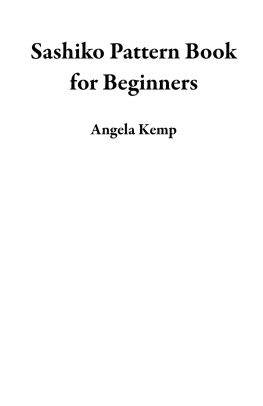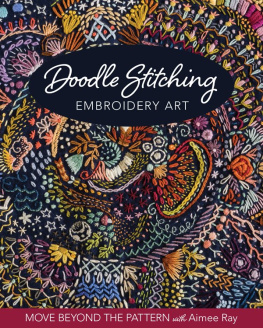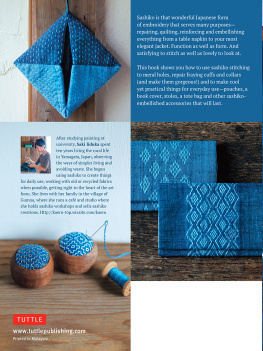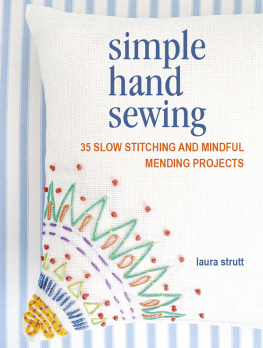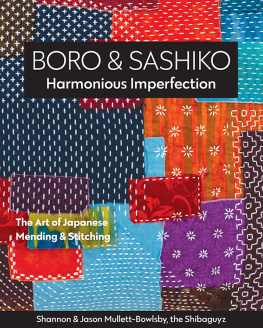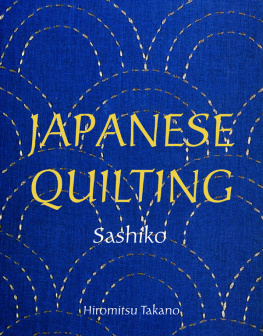angela kemp - Sashiko Pattern Book for Beginners: A Japanese Embroidery Art of Stitching Fabrics For Stylish Decorations Plus Designs, Tools, Supplies, and Project Ideas to Get You Started
Here you can read online angela kemp - Sashiko Pattern Book for Beginners: A Japanese Embroidery Art of Stitching Fabrics For Stylish Decorations Plus Designs, Tools, Supplies, and Project Ideas to Get You Started full text of the book (entire story) in english for free. Download pdf and epub, get meaning, cover and reviews about this ebook. year: 2021, publisher: Angela Kemp, genre: Children. Description of the work, (preface) as well as reviews are available. Best literature library LitArk.com created for fans of good reading and offers a wide selection of genres:
Romance novel
Science fiction
Adventure
Detective
Science
History
Home and family
Prose
Art
Politics
Computer
Non-fiction
Religion
Business
Children
Humor
Choose a favorite category and find really read worthwhile books. Enjoy immersion in the world of imagination, feel the emotions of the characters or learn something new for yourself, make an fascinating discovery.
- Book:Sashiko Pattern Book for Beginners: A Japanese Embroidery Art of Stitching Fabrics For Stylish Decorations Plus Designs, Tools, Supplies, and Project Ideas to Get You Started
- Author:
- Publisher:Angela Kemp
- Genre:
- Year:2021
- Rating:3 / 5
- Favourites:Add to favourites
- Your mark:
Sashiko Pattern Book for Beginners: A Japanese Embroidery Art of Stitching Fabrics For Stylish Decorations Plus Designs, Tools, Supplies, and Project Ideas to Get You Started: summary, description and annotation
We offer to read an annotation, description, summary or preface (depends on what the author of the book "Sashiko Pattern Book for Beginners: A Japanese Embroidery Art of Stitching Fabrics For Stylish Decorations Plus Designs, Tools, Supplies, and Project Ideas to Get You Started" wrote himself). If you haven't found the necessary information about the book — write in the comments, we will try to find it.
Are you a lover of Sashiko embroidery but have no idea how to go about this art? Do you want a beginners guide that educates you on this Japanese art of stitching? If so, then read on...
Sashiko, which represents needle (Sashi) and sew (Koso), is an ancient Japanese embroidery technique used in crafting beautiful patterns on fabric and non-fabric materials (such as garments, bags, shoes, jewelry, gift items, and so on) via a stitching process called the running stitch and is also employed for decoration purposes to adorn the home and office. The only limitation to maximizing this Japanese art is your imagination and creativity. However, you will need some degree of patience and mastery of this Japanese embroidery art to craft beautiful Sashiko patterns on fabric and non-fabric pieces; hence the reason this book, Sashiko Pattern Book for Beginners, is written to help you acquire the right knowledge and to provide you with the necessary guidance to make your learning of the Sashiko art a worthwhile experience.
Below are some of the highlights covered in this book;
The journey to becoming a master in the art of Sashiko embroidery lies in just a few clicks. So, what then are you waiting for?
Simply get a copy of this book RIGHT NOW to get started with expressing your creative side in making beautiful fabric and non-fabric Sashiko stitching patterns.
angela kemp: author's other books
Who wrote Sashiko Pattern Book for Beginners: A Japanese Embroidery Art of Stitching Fabrics For Stylish Decorations Plus Designs, Tools, Supplies, and Project Ideas to Get You Started? Find out the surname, the name of the author of the book and a list of all author's works by series.

